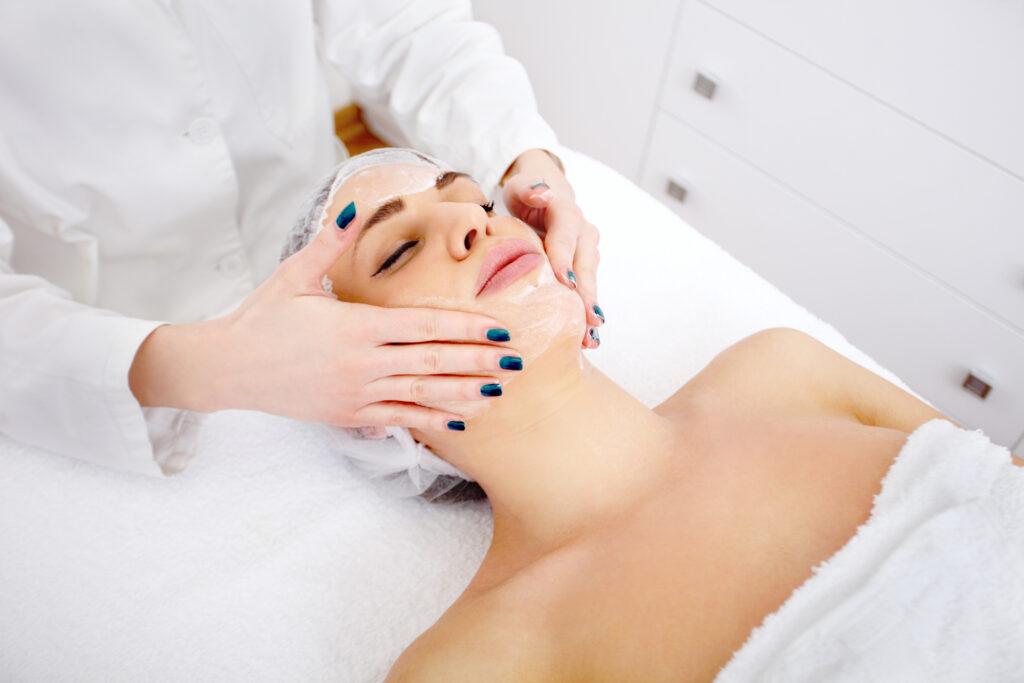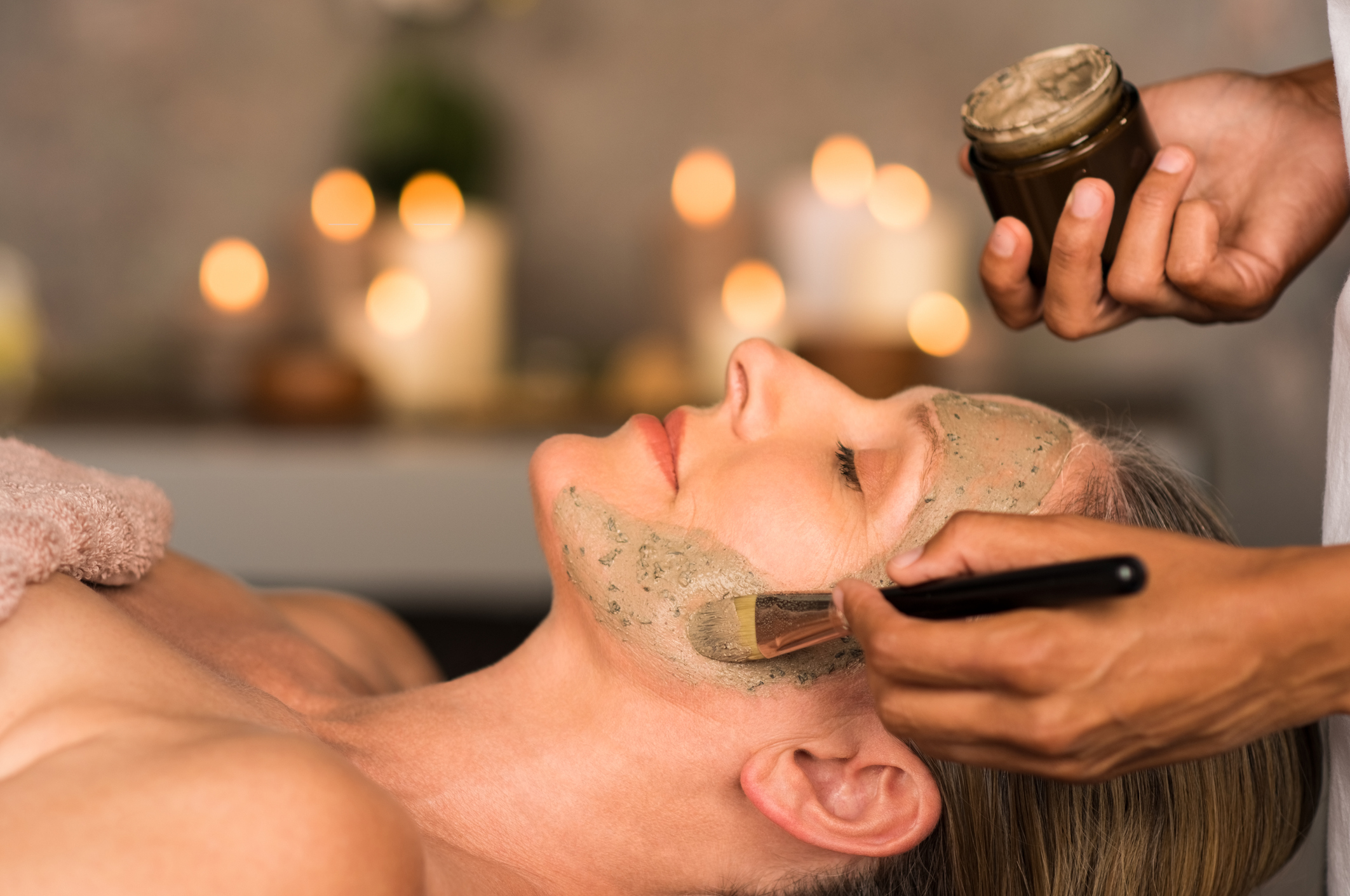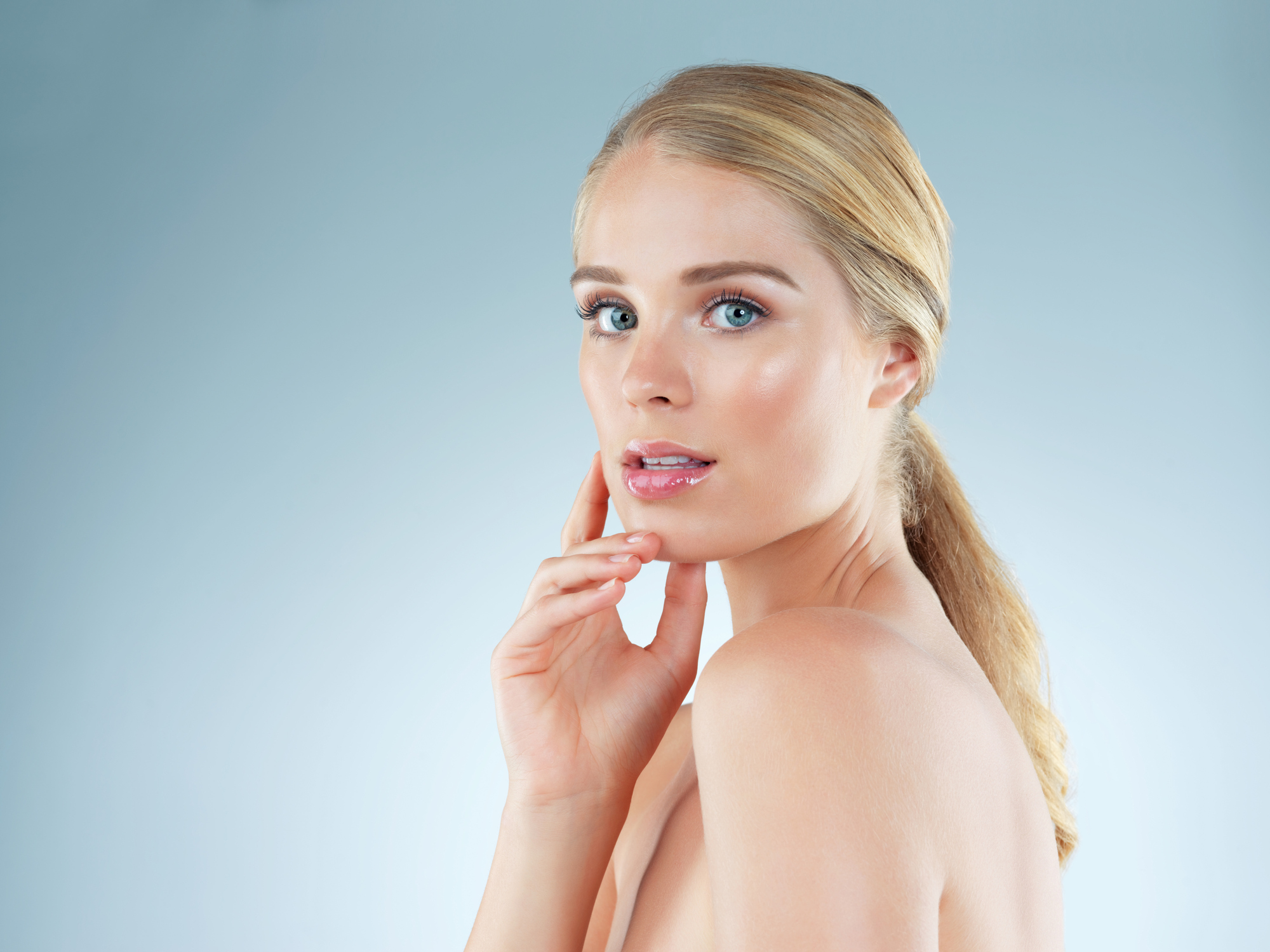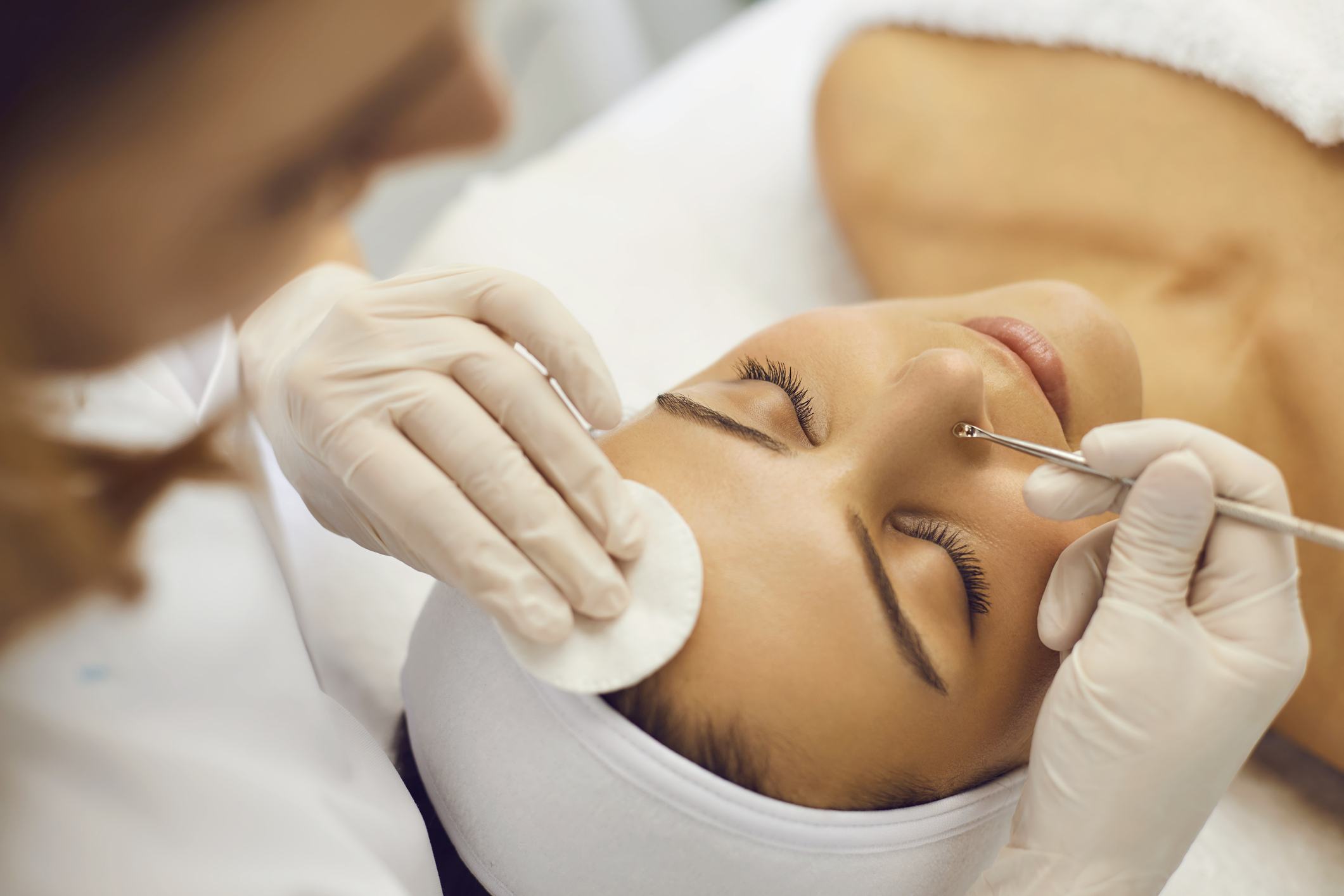About the Acne Facial
An acne treatment facial can help clear out blackheads and blocked pores, and complement a client’s regular acne medications. Each acne treatment facial is customized according to the client’s skin concerns.
Before the facial, patients discuss their skin concerns and medical history so that the aesthetician can customize the facial effectively.
Acne Facial Steps
Exfoliation & Blemish Extraction
Exfoliation is a critical step during the acne treatment facial. Exfoliating helps remove dead skin cells and debris clogging pores. Another benefit of exfoliation is how soft and smooth the skin feels after this step. Exfoliation may be done using a simple scrub, microdermabrasion, or a superficial chemical peel. However, during an acne treatment facial the aesthetician will typically do a salicylic acid peel to exfoliate the skin. The exfoliation method will be tailored to the client’s skin and the aesthetician will take into account the acne medications the client is currently taking.
Clients using topical retinoids or isotretinoin will undergo an extremely gentle exfoliation or none at all. This is because these medications already intensely exfoliate the skin.
Extractions involve manually cleaning out blackheads and comedones from pores. The aesthetician will do this by applying gentle pressure with a small tool called a comedone extractor. Extractions don’t feel comfortable, but they shouldn’t hurt.
Clients with many blackheads may not have them all removed during a single session and will need additional acne treatment facials. Aestheticians also don’t extract inflamed blemishes, such as cysts. This is only done by a dermatologist.
Masking, toner & Moisturizer

Once the extractions are done, the aesthetician will apply a mask. She will determine what type of mask will be most beneficial to the client’s current skin condition. Sulfur masks are commonly used during acne treatment facials because sulfur is an effective ingredient for clearing acne. On the other hand, clients with very oily skin may benefit from an oil-absorbing clay mask. Clients with red skin from inflamed pimples or from the extractions may be given a soothing mask. While the mask is setting, the aesthetician will treat the client to a neck and shoulder massage, or massage their hands and arms.
After removing the mask, the aesthetician will apply a toner or astringent over the entire skin to remove excess oil and tighten skin. The final step in an acne treatment facial is the application of a moisturizer and sunscreen to hydrate and protect the skin.



